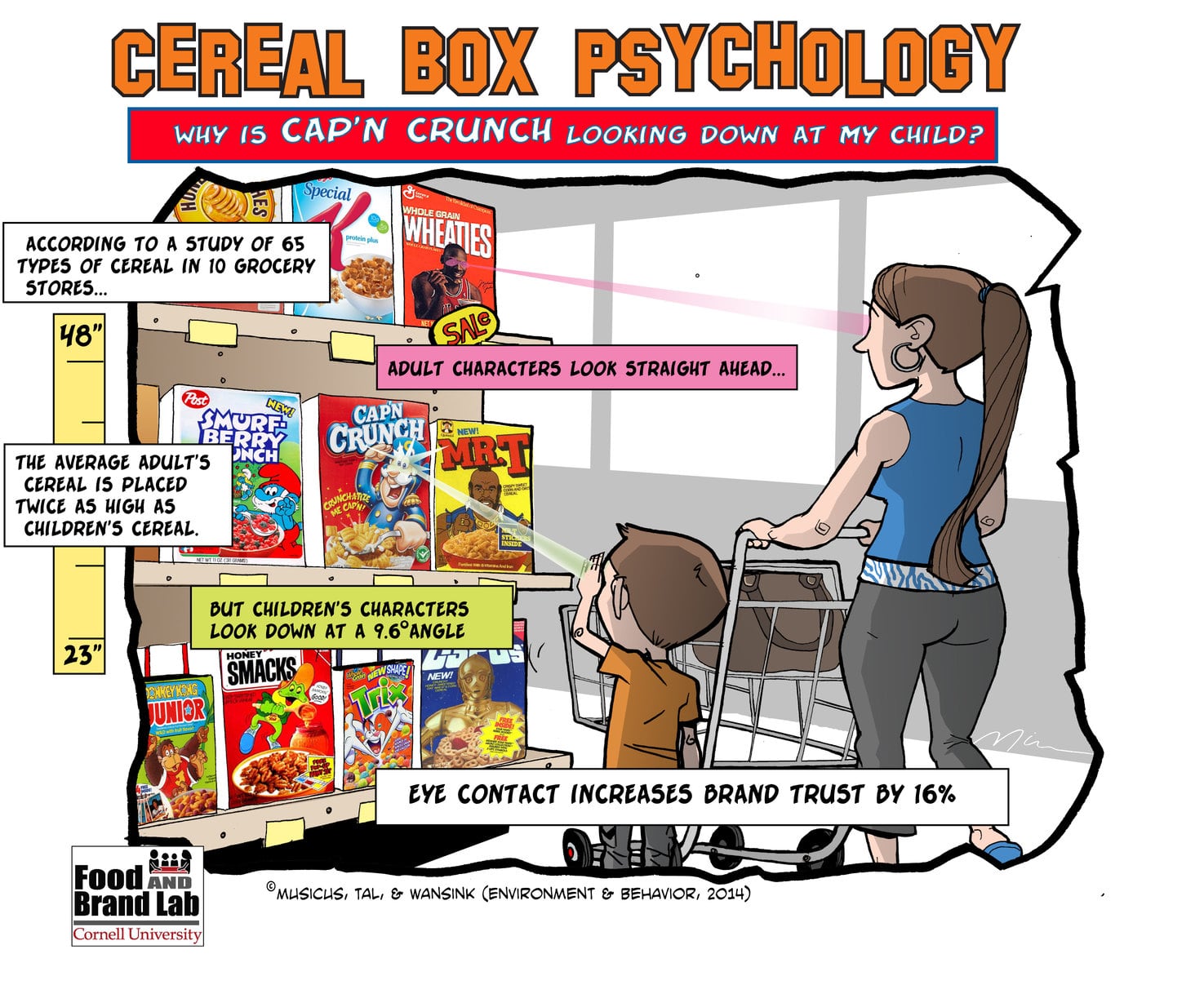The peer-reviewed research, published in the Journal of Environment and Behavior earlier this month by Cornell University’s Food and Brand Lab, found that kids’ cereal mascots were positioned to gaze downwards to the child. In a secondary part of the research, the team also found that kids’ cereal mascots were positioned to gaze downwards to the child. In a secondary part of the research, the team also found that mascots making eye contact sparked consumer trust and brand loyalty and claimed this could be used strategically by cereal brands to build up the appeal of nutritional products.
General Mills has heavily decried the primary part of Cornell’s research on mascot eye positioning.
In a corporate blog post, the company’s vice president of global communications Tom Forsythe said the decision to respond to poor research and pseudo-science was often difficult but added that there was a need to respond to this study “because it’s absurd”.
“We know Dr. Wansink’s work. He’s done some very interesting research. This is not his best,” he wrote.
‘Perhaps Cornell would like to retract’
Forsythe said there were several flaws to the research, including the suggestion that a majority of kids’ cereal mascots gazed downwards, making incidental eye contact with children, and that the products were positioned on lower retail shelves to align better with younger consumers.
A large number of kids’ cereal mascots gazed in other directions, he said, with some looking upwards, sideways and, at times, even had their eyes shut.
Taking the example of General Mills’ own cereal brand Trix – a case study used in the secondary part of Cornell’s research on eye contact and consumer trust – Forsythe said there were occasions when the Trix rabbit looked downwards, but his eyes tended to look in other directions.
“But do you notice what he seems to be looking at? That’s right – AT THE BOWL OF CEREAL PICTURED ON THE BOX. Because he loves Trix,” he wrote.

In terms of the shelf positioning findings, he said a quick Google search had indicated the average height of a 13 month child who had started to walk was around 30 inches tall and the average four-year old was about 40 inches tall.
“If this research was in any way meaningful – which it’s not – these supposedly downward looking characters would be looking below eye level of the youngest kids possible. Unless mom is dragging the kid on the floor. Or the kid is duck-walking,” he said.
Finally, Forsythe criticized the Cornell researcher’s copyrighted cartoon image that included Mr. T cereal – a brand he said disappeared in the early 1980s.
Cornell: ‘We certainly meant no disrespect’
Brian Wansink, director of Cornell’s Food and Brand Lab, responded to Forsythe’s post in the comment section at the bottom.
“I’m a huge believer in General Mills and your Institute, and we certainly meant no disrespect (even saying in the journal article that the characters were looking down at the cereal and that any eye contact to children was incidental),” he wrote.
Wansink reiterated that the findings were based on averages; where 51 out of 57 breakfast cereals had mascots that were looking downwards at an “overall average of something like -9 degrees”.
In response to Forsythe’s criticism on the use of cereal brands in the University’s cartoon image, Wansink clarified that the research had been based on a snapshot sample of cereals found in retailers during the summer of 2012.
“I’d be pleased to talk with you if you have the time. If you’d like to skim the boring journal article (which can be downloaded at our website that you found), you can then contact my operations manager (…) to find a time after 4:00 CST that works best for us to visit,” he added.
